I got excited when Canon Netherlands asked me to review the new Canon EOS R3. Together with the camera, I received three lenses and was offered just four days to use them under different circumstances. In this review, I share my first impression and shooting experience.
We all expected the next camera in the mirrorless R series would be a flagship camera, something that would replace the amazing Canon EOS 1D X Mark III, which I reviewed more than one year ago in 2020. Canon surprised everyone with the Canon EOS R3, and I could be mistaken, but the number seems to refer to the old analog Canon EOS 3. That camera was the first one to have an eye-controlled AF system, just like the EOS R3. More about that later.

The Canon EOS R3 with the trinity of lenses. The RF 15-35mm f/2.8L IS USM, the RF 24-70mm f/2.8L IS USM, and the RF 70-200mm f/2.8L IS USM.
The Most Important Specs
- 24-megapixel stacked CMOS Dual Pixel sensor
- Electronic shutter up to 1/64,000 second
- 30 frames per second in electronic shutter mode with full 14-bit raw
- 5.69-million-dot electronic viewfinder with eye-controlled AF
- Eye, head, and body AF for humans and animals, also vehicle detection
- Extensive customization for AF buttons and AF settings
- AF-ON with Smart Controller
- No blackout in the electronic viewfinder
- HDR viewfinder function to mimic an optical viewfinder
- 4.15-megapixel fully articulating 3.2-inch LCD screen
- PQ HDR recording 10-bit HEIF files
- AF works up to -7.5 EV with an f/1.2 lens
- DCI and UHD 4K video up to 120p and oversampled 60p
- Raw video with 10-bit C-Log3
- Hot shoe with interface
- In-Body image stabilization of up to 8 stops

The Canon EOS R3 is a comfortable camera to use, even with larger lenses. It's well balanced and not too heavy.
First Impression of the Camera Body
Just like every Canon EOS 1D model, the EOS R3 also has a built-in grip for vertical shooting. You can find double controls on the back and the second set of custom buttons on the front. The small LCD screen below the main LCD screen is gone. The left side of the top plate has a few buttons, similar to the EOS 1D models, and it has the wonderful Smart Controller on the AF-ON button. Every other design element is similar to the Canon EOS R5.
The large 3.2 inch LCD touchscreen has 4.12 million dots, which is the largest resolution you can find at this moment. The screen Is fully articulating, and the body has a large recess that makes it easy to move the screen from its closed position, even when wearing gloves.
The touchscreen itself can be used to operate the full menu or the quick access menu. You can also use it for swiping the AF point to the desired area. In a way, nothing is surprising about that, since it is similar to every other modern Canon camera with touchscreen functionality.
The Autofocus Possibilities
There is a lot to tell about the autofocus system of the Canon EOS R3. It has improved subject recognition, and you can switch between human, animal, or vehicle. The system is smart enough to recognize the object you have chosen, but it will automatically switch to one of the other subjects if the chosen subject isn’t found in the frame.

Some of the AF functions that can be found in the Canon EOS R3 menu. The settings menu for the eye-controlled AF function is not visible in this overview.
Just like the old Canon EOS 3, the Canon EOS R3 has an eye-controlled AF system. The Canon Dual Pixel AF system allows a much more precise use of this feature, something that wasn’t possible back in the old days.
The system works better than expected. After you have calibrated the system to your eye, it will know where you are looking at in the viewfinder. If you activate the AF system, it will focus at that point. In other words, you won’t activate the AF system just by looking at your subject. You still have to activate the AF yourself. But the eye-controlled AF will make it much easier to set the AF point at the right spot.
There are up to six memory banks for the eye calibration. In the standard setup, the SET button will activate the eye-controlled system so you can quickly activate it if needed or deactivate it.

Almost every button and dial is customizable, although not every function is available for every button. The AF buttons are extremely customizable, and you can set multiple behaviors for different buttons that are assigned to activate the AF.
The customization of the AF system goes beyond any previous EOS model. Of course, you can customize nearly every button on the Canon EOS R3, but if you choose to assign the AF function to a button, it is possible to dive into two layers of additions AF settings. This way, you can not only use more than one button for the AF to activate but each with different behavior and setting.

There are four ways to place the AF point in the frame. The Smart Controller on the AF-ON button is a great option.
There are different ways to place the AF point in the right area in the frame. The first one is the aforementioned eye-controlled AF. The second is the old-fashioned joystick, and the third is by swiping over the touchscreen. The Canon EOS R3 has the Smart Controller on the AF-ON button as a fourth option, just like with the Canon EOS 1D X Mark III. This small infrared sensor enables you to use it as an inverted mouse, moving your thumb over the button to move the AF point. I love this system and do miss it on my Canon EOS R5.

The Smart Controller was first used on the Canon EOS 1D X Mark III. The infrared sensor allows a great way of moving the AF point on through the frame.
The vehicle detection is said to be designed for sports motorcycles and sports cars. Unfortunately, there was too little time available for a good test. I tried to shoot some ordinary vehicles, and the system does recognize the cars and also bicycles, but perhaps it would have done this also without vehicle detection. More testing should be performed to get a good idea of its performance.

A few simple tryouts for vehicle detection. It did work, although there wasn't much of a challenge in this situation.
The Speed of the Canon EOS R3
With the mechanical shutter, the Canon EOS R3 will allow up to 12 frames per second. Although this is a respectable speed, the camera will become much faster when switching over to the electronic shutter. Without any blackout in the electronic viewfinder, it is possible to shoot up to 30 frames per second.

A series of cropped images, shot at 30 fps with a combination of eye-controlled AF and eye-AF for animals.
With 12 frames per second, the camera can keep up with writing files to the memory card without any limit. During a test, I stopped shooting after 1,500 images in both c-raw and JPEG. With 30 frames per second, the camera can record up to 100 frames in one burst, also in both c-raw and JPEG.
If you need to shoot at this speed for a prolonged amount of time, switching over to JPEG or 10-bit HEIF will probably increase the number of images in one burst. Of course, the speed of the CF-Express type B card or UHS-II SD card will also have an influence. I used a Sandisk Extreme Pro 128GB CF Express type B with a writing speed of 1,200 MB/s.

The Canon EOS R3 accepts both CF Express type B and UHS-II SD cards. For this review, I used a Sandisk CF Express card.
Image Quality
The Canon EOS R3 uses a stacked CMOS Dual Pixel sensor with 24 megapixels. Although it’s not the highest resolution, this is more than enough for most situations. It also allows a good signal-noise ratio, which results in great high ISO performance.
You can use the Canon EOS R3 from ISO 100 up to ISO 25,600 and add three stops in the expanded ISO range. I used the camera mostly in the auto-ISO setting, and due to the dark winter days in the Netherlands, I did need the full range of ISO settings that are available.

The dark winter days in December forced me to use high ISO values to acquire fast enough shutter speeds. The Canon EOS R3 performed well. (EOS R3, RF 70-200mm at 200mm, ISO 16,000, f/3.2, 1/640 s)
I already noticed how well the camera handled the high ISO levels. It surprised me how well images at ISO 16,000 looked straight from the camera. A simple studio test also showed a great high-ISO performance. Correcting a five-stop underexposure at ISO 400 showed almost the same amount of noise compared to the image exposed correctly.

A simple studio test with a high ISO and an ISO 400 image with 5 stops under exposure, corrected in Lightroom Classic.
My Shooting Impressions
I’m by no means a sports photographer, but I love shooting our dog while playing. For the fast shutter speeds I wanted, I had to increase the ISO levels a lot, sometimes up to the maximum setting of ISO 25,600. Although I was afraid of the noise at first, the images straight from the camera looked clean and full of detail.

After sunset with strong overcast forced me to use a high ISO. The camera retained a lot of details nevertheless. (EOS R3, RF 70-200mm at 111mm, ISO 8,000, f/3.2, 1/200 s)
Holding and using the Canon EOS R3 is very comfortable. The camera is only 1,014 grams, which is less compared to the Canon EOS 1D X Mark III. The ergonomics are great, and every button or switch is easy to reach. The buttons, dials, and switches are of great quality and have good feedback. The touchscreen works great, and thanks to the fully articulated screen, shooting from difficult positions is easy. Combined with the flexibility and accuracy of the AF system, you can fully concentrate on the action and composition.

Holding the Canon EOS R3 feels familiar. The fully articulated screen works nicely when shooting from difficult positions.
I noticed how the reliability of the AF system depends on the configuration. I used the camera for a soccer game and for mountain bikers in a forest. Although the system won’t let you down, the accuracy increases when the most optimum setting is found. For that, the Canon EOS R3 has amazing customization abilities for the AF system. For instance, the eye-controlled AF worked great at the soccer game, but is less easy with a mountain biker that moves between trees. Using different settings for different AF buttons will make life a lot easier with the Canon EOS R3. You might need time to discover which setting works best for each sport or action.

The AF system can be fully customized to match the action you are photographing. (EOS R3, RF 15-35mm at 15mm, ISO 5,000, f/3.2, 1/500 s)
The speed of the camera is amazing, and the buffer is large enough to capture fast action. During the short amount of time I was able to shoot with the Canon EOS R3, I found it to be an amazing camera, and I'm sure it will excel in sports, action, and probably wildlife photography as well. It may not have the amount of resolution that can be found in the Nikon Z 9, which I also reviewed a week earlier, but you get a lot in return.

A simulation of the screen you may expect when shooting with the Canon EOS R3. If the subject is recognized, a blue box will appear at the focus point.
Some are also comparing this camera with the Sony A1, but somehow, I don’t think that would be a fair comparison. The Canon EOS R3 is designed as a sports and action camera, just like the Nikon Z 9. I found the Sony A1 to be more like an advanced all-in-one camera and not specialized in one branch of photography.
Things I Like
- Good ergonomics
- Shutter speed up to 1/64,000 second
- Extremely customizable, especially the AF system
- Eye control AF works surprisingly well
- Smart Controller in the AF-ON button
- Large memory buffer with fast writing speed to an empty buffer
- Large dynamic range and great high-ISO performance
- High-resolution LCD touch screen with well-designed recess to grab the screen
- Auto bracketing function accessible with button combination
- Older EOS 1D X batteries can be used
- Despite the size, it weighs 1,014 grams including battery not too heavy
- Eye-AF works already when the subject is small in the frame
- Large and bright electronic viewfinder with good optical HDR simulation
Things That Can Be Improved
- Shutter speed still limited to 30 seconds before switching to BULB
- Accessible functions for custom buttons somewhat limited
- No possibility to activate the AF with eye control AF.
- No PASM dial
About the Video Functions of the Canon EOS R3
The Canon also offers a range of video functions, although the purpose of the Canon EOS R3 is sports, action, and wildlife photography. The possibilities are enough for the average user. It offers full HD and 4K resolution, up to 120p. You have the option for raw movie format and C-Log3 also.
There was too little time available to test the video functions. I did notice the lack of a noticeable rolling shutter effect, which is a good thing for a camera that is for fast action photography. But I do think it isn’t the most ideal and versatile camera for the filmmaker.
A big thanks to Canon Netherlands for providing the Canon EOS R3.
Gallery
Purchase
You can purchase the Canon EOS R3 here.
If you're passionate about taking your photography to the next level but aren't sure where to dive in, check out the Well-Rounded Photographer tutorial where you can learn eight different genres of photography in one place. If you purchase it now, or any of our other tutorials, you can save a 15% by using "ARTICLE" at checkout.






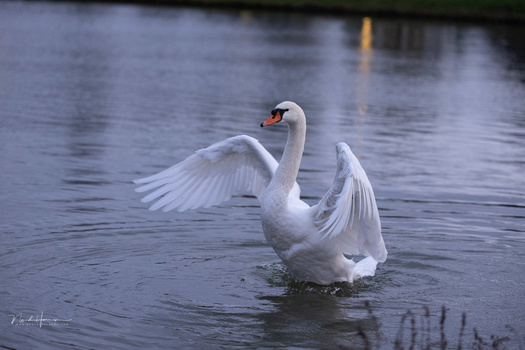
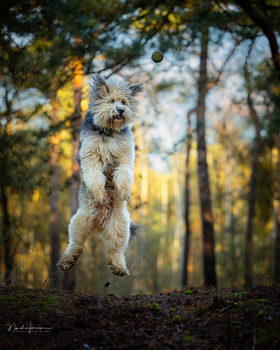
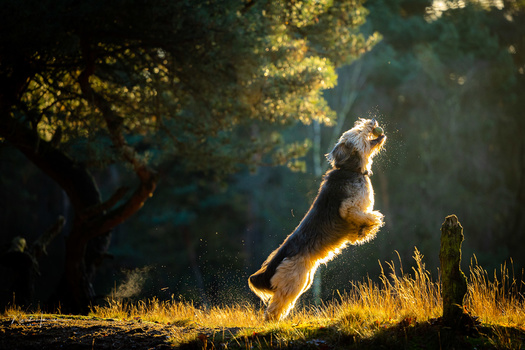
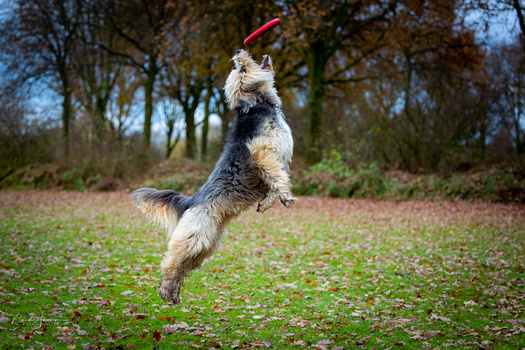
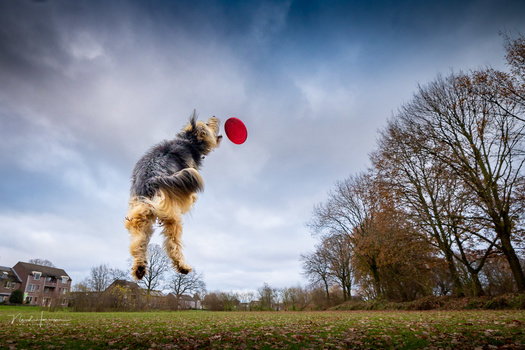
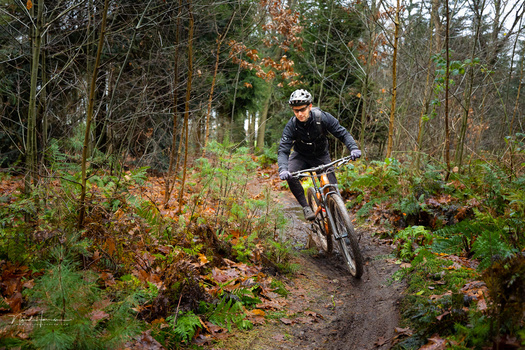
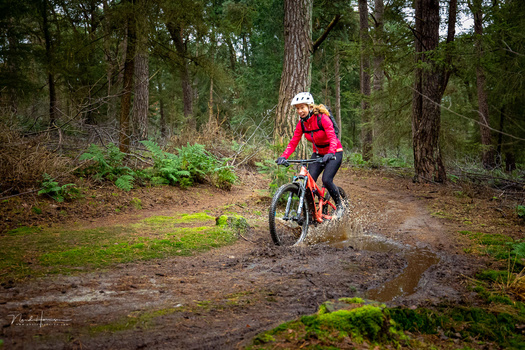
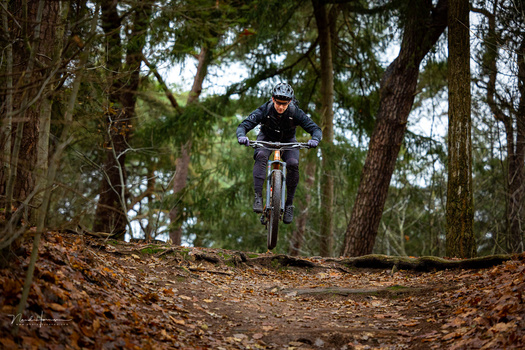
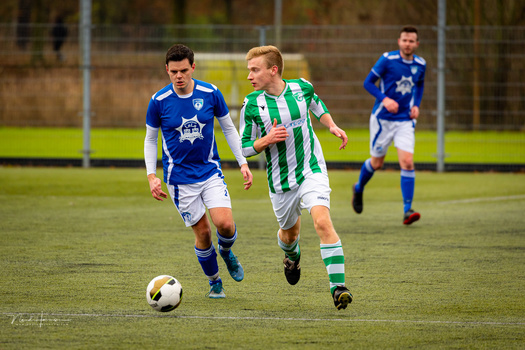
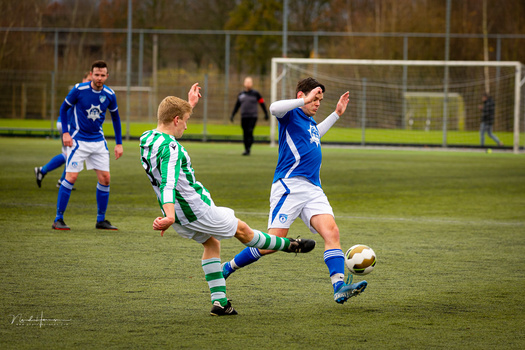
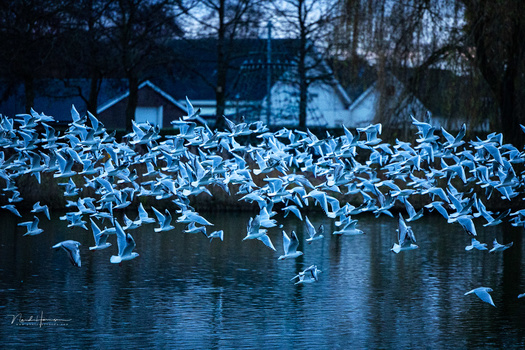






what about battery life? how does it compare to the 1dx mark 3?
I don't have a direct comparison. The shots per battery life as mentioned in specs are often a conservative amount. I had the EOS R3 not long enough to get an honest impression
ok thanks.
I ask this because I recently bought the 1dx3 and the main factor was the battery life. I don't like to fill my backpack with batteries.
The 1Dx III is an amazing camera. Just keep using that one. :)
You literally threw away your money.
Strange response.
not everybody can afford to change three reflex and eight EF lenses to switch over to mirrorless.. for now, even if the R3 is a fantastic camera, I think that FOR ME, the 1dx3 is the best camera.
I'm pretty sure that my clients can't tell the difference between the R3 and anyone of my cameras. cheers!
You do know that there is no need to switch the lenses do you?
I switched to R3 & R5 and kept all my EF lenses. Did not buy any RF (except 600mm for fun) bit just 100$ adapter.
And no, there is no loss of quality or speed. Speed of EF lenses (general AF) is even improved if used on mirrorless.
yes, I know! But I think that this conversation is drifting away from my initial question: the battery life.
can you compare the R3 vs 1Dx3? how many batteries do I have to carry with me to complete a wedding, for example? With the 1Ds I can shoot a wedding with only one full battery, is the same with the R3? The batteries here in Italy cost about 230€ each and they're really difficult to find. I ordered one directly from canon and I've waited over 40 days, do you see my problem?
It all depends on your way of photographing. I would recomment renting one to find out.
By the way, the R3 can use the same batteries as used in the 1Dx III
Look at that beast! Its mammoth. Cant imagine lugging that thing around. Must be aweful.
Sports and wildlife photographers will appreciate the ergonomics and sturdy build. Although I’m undecided if your comment is trolling or not.
At 1 kg, it doen't weigh much more than other professional mirrorless bodies - and 300g less than Nikon Z9.
Thanks Nando. Sure, it's a great camera. After reading your article, I am curious about some aspects:
It looks like a professional body. Does it have illuminated buttons? (I assume not, that would be a shame).
How fast can you switch between the different AF modes?
If you use the electronic shutter: What is the rolling shutter effect?
And what about the battery life?
There are some illuminating buttons, but not many. Switching between AF modes can be very quickly, depending on the configuration of the camera. I had programmed two different AF behaviors, each for another button.
I shot nearly every action sequence in electronic shutter. There is a minimum amount of rolling shutter which is visible if you look really carefully. I have added one panning image to have an idea of the amount. Shot in vehicle tracking, 30 fps, electronic shutter.
Thank you very much.
I would buy this camera if I needed. As an enthusiast or hobbyist wildlife photographer; I need fast cameras producing quality images. Last month I bought a used 1D Mark IV from B&H having a shutter count of 42k. I have been using 7D for this purpose for quite a while already.
The R3 seems impressive and tempting. However, my 1DIV is a lion and gives me all the necessary services it is supposed to. Moreover, it produces 30% more reach than both R3 and 1DxIII. My composite 600mm (300mm 2.8L II + 2x) extends to 780mm on this body. Furthermore, it produces a lovely hand-holdable combo with my EF 400mm 5.6 + 1.4x. This trio gives me 728mm of FF equivalent reach at f/8 retaining AF with the center point. This camera’s IQ and ISO performances are great so is the burst rate as well for a hobbyist like me. Wonderful battery life, two card slots – couldn’t have asked for more. As per my rating, both 1DxIII and R3 loses out to 1DIV on the reach factor which is of paramount importance for wildlife photography.
BTW, I'm not into videos so, couldn't care less about that option. IMO, creating short casual videos hardly makes any sense. It is cinematography that tells stories. And that's an entirely different ball game.
One more thing. Canon is a pathetic laggard in the super telephoto zoom sector. Nikon enchanted its users with the 200-500mm f/5.6 super telephoto zoom. Together with D500; it makes the best wildlife/bird photography rig in the world. Subsequently, Sony came along with the 200-600mm super telephoto zoom lens for its MILCs. Canon had nothing for long. Finally when they did enter this stage for their MILCs; they produced glasses that are slower and pricier compared to the other two!
Therefore, even if I did need a body now, wouldn’t have gone for R3 due to absence of compatible quality glasses.
200-400 f4 with built in teleconverter. 560mm f5.6 with teleconverter engaged. Pretty good lens.
I know about Canon EF 200-400mm f/4L lens. However, didn't want to compare $ 11k lens against $ 1.4k and $ 1.9k lenses. In this affordable and portable supertele segment; Canon is miles behind.
Educated guess tells me that Canon wants consumers to buy the high end primes. And going by Canon's sales, I'd say they have the correct strategy. There are third party super zooms that work just fine. I own one. I can't afford the nice primes, but if I had the extra dinars, you bet I'd have a couple of those beasties.
if you are a pro - this may be what you could use - if you do everything ever involved with an image.
otherwise, you're lugging around a lot of equipment to focus light on a postage-stamp sized sensor
"to focus light on a postage-stamp sized sensor" you say... also in other reponses I've seen. It feels like you're trolling with your comment, but I could be mistaken
not a troll at all
image is the same size as the sony a7c
weighs more than 2x
it is a wonderful tool for some subsets of hard-core pro
but don't take it on vacation if you want to enjoy yourself
and don't even think of using it if you're engaged in any other concurrent activity
At least you can focus it instantly in comparison to Phase one or Hasselblad focusing speed 😉